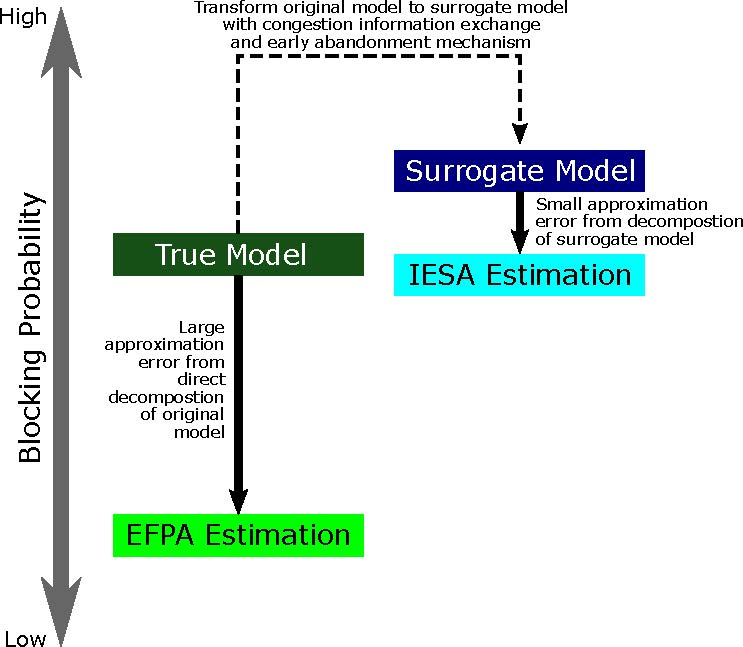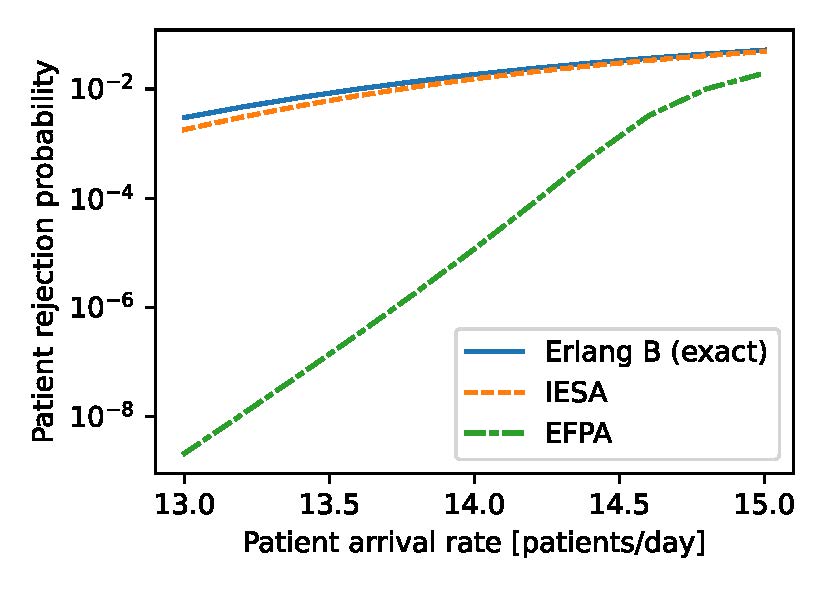CityU researchers tackle a century-old teletraffic challenge to enhance medical and public service efficiency
Efficiently meeting the growing demand for public services in metropolitan areas has long been a persistent challenge. A research team at City University of Hong Kong (CityU) has developed a novel performance evaluation method, which marks a major breakthrough in tackling a century-old problem of evaluating blocking probabilities in queueing systems with overflow, providing ways to allocate limited resources better. With the remarkable advances in computational efficiency and accuracy, the method has great potential to optimise the performance of numerous telecommunication networks and even medical care systems, ultimately enhancing resource allocation and capacity planning for a wide range of public services.
Teletraffic theory is the application of probability theory to the solution of problems concerning planning, performance evaluation, operation and maintenance of telecommunication systems and even service systems. It enables informed decision-making, efficient resource management, and optimal network performance in the dynamic and stochastic environment of telecommunication networks and service systems. The term “teletraffic” covers all kinds of data communication traffic and telecommunication traffic. But the tools developed from the theory are independent of the technology and applicable within other areas, including all kinds of service systems.

Among them, overflow loss systems (OLSs) are an important class of teletraffic mathematical models commonly found in public services, such as wireless communications, cloud computing, and intensive care and emergency services. They can be used to analyse potential situations of failing to respond to or cater for important requests due to overwhelming demand or limited capacity. The probability of a request being rejected, known as the blocking probability, is a key performance metric of OLSs.
Evaluating blocking probabilities in such systems, which involve mutual overflow effects, has been a challenging century-old problem. This is crucial for designing telecommunications and service systems and making sure the resources can be allocated efficiently.

(Source: “A Century-Long Challenge in Teletraffic Theory: Blocking Probability Evaluation for Overflow Loss Systems With Mutual Overflow, DOI: 10.1109/ACCESS.2023.3283803)
To address this challenge, in 2013, a research team led by Professor Eric Wong Wing-ming, Associate Professor in the Department of Electrical Engineering at CityU, pioneered the development of a mathematical method, called Information Exchange Surrogate Approximation (IESA), to calculate the blocking probability in OLSs. It significantly increased accuracy and robustness, while achieving computational efficiency, compared to conventional approximation methods. The team has published various developments under the IESA framework in IEEE Transactions on Communications, IEEE Transactions on Green Communications and Networking, IEEE/OSA Journal of Lightwave Technology, IEEE/OSA Journal of Optical Communications and Networking, and IEEE Communications Letters.
Recently, they further improved IESA by developing IESA surrogate models and incorporating neural network algorithms, which can achieve even smaller estimation errors, offering a generic and versatile performance evaluation tool to efficiently coordinate the distribution of resources, such as in hospital intensive care units (ICUs) and cellular mobile networks, in a systematic and scientific manner.

To demonstrate the application potential and efficacy of IESA, the team applied it to a simplified scenario to evaluate the probability of a patient being rejected in a network of 15 ICUs, each with 15 beds, assuming that patients can be referred to any ICU in the network and have a mean length of stay of 15 days. Compared with the previous state-of-the-art method, the IESA surrogate model provided a much more accurate estimate of the actual rejection probability, with improvement of up to six orders of magnitude.
The latest findings were published in IEEE Access, titled “A Century-Long Challenge in Teletraffic Theory: Blocking Probability Evaluation for Overflow Loss Systems With Mutual Overflow” (DOI: 10.1109/ACCESS.2023.3283803). In the article, they also describe historical and recent developments in tackling this century-old challenge in teletraffic theory, and explained how IESA can successfully tackle this challenge, creating a major breakthrough in this century-long effort.
To further test actual applications of the theoretical study, Professor Wong and his team are working with public bodies and the telecommunications industry to apply IESA in real-world situations in healthcare systems and mobile networks.
For example, they are collaborating with the Coordinating Committee in Intensive Care of the Hospital Authority (HA) of Hong Kong to optimise resource allocation and capacity planning in ICUs. The team conducted a preliminary study on “performance evaluation” and “optimisation” of ICUs by applying IESA based on simulated data and a hypothesised ICU network model. They also conducted analysis based on real datasets retrieved from the Clinical Data Analysis and Reporting System of the HA and a real ICU node model to evaluate important metrics, such as the patient-rejection rate.
“Our preliminary results have received positive feedback, and we plan to implement IESA for a pilot test using real patient data and the real ICU network in Hong Kong,” said Professor Wong. “We hope that our model can benefit public services by allocating resources more efficiently.”
The co-first authors of the study are Professor Wong, from CityU, and Dr Chan Yin-Chi, Research Associate in the Institute for Manufacturing, University of Cambridge. The study received support from the Health and Medical Research Fund and the General Research Fund in Hong Kong.